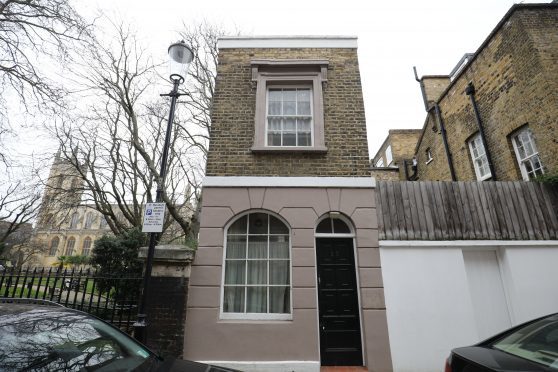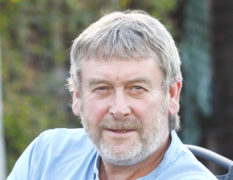Downsizing one’s house speaks to the idea of prudence, not the agony of selecting possessions to be discarded.
When it comes to books, questions have to be answered. Will old football books be read again? What about the works of history, barely opened as a student?
Leafing through forgotten volumes is still rewarding. One caught the attention recently because of its unexpected first paragraph. It was that few in the English-speaking world could be unaware of the language’s most famous split infinitive –Star Trek’s “To boldly go where no man has gone before…” And this in a book about postage stamps.
It is an intriguing work on stamps produced by different countries to honour Scots. Some of them had boldly gone, although to places where men had definitely been before. Were indeed still there.
There were others. Arthur Conan Doyle’s Sherlock Holmes featured in a series of stamps issued in 1972 by Nicaragua to mark the 50th anniversary of the founding of Interpol. That country also honoured footballer Denis Law with a stamp in 1980.
Telephone inventor Alexander Graham Bell appeared on stamps of numerous countries from Luxembourg to Swaziland. Meanwhile the 200th anniversary of the birth of explorer Mungo Park was commemorated in the Gambia with a special stamp.
There were several in North America, where so many Scots had boldly gone. One Canadian stamp was for the Earl of Selkirk issued in 1962 to mark the 150th anniversary of settlers arriving in the Red River Valley.
They had come from the Highlands and Ireland, because of the offer of land bought by the benevolent Scottish aristocrat in today’s Manitoba. He had been shocked by the plight of many who faced eviction/clearance and helped them emigrate and build a new life.
Two years later another Highland party arrived, this time from the Strath of Kildonan. Their extraordinary journey by ship, foot and canoe is followed in fellow P&J columnist Jim Hunter’s award-winning book on the Sutherland Clearances “Set Adrift Upon the World”.
They were to help found the provincial capital Winnipeg, which has a district called Kildonan. The earl’s memory is still honoured, not least in the town of Selkirk 14 miles from Winnipeg – population over 10,000.
Not every reputation on stamps survived as well. Dunbar-born conservationist John Muir, father of American national parks, arrived in the US in 1849. We have learned lately of his thoughts on race. Last year amid the Black Lives Matter campaign, the environmentalist Sierra Club issued a public apology for their founder’s views which – “continue to hurt and alienate indigenous people and people of color”.
Glasgow-born Sir John A Macdonald, Canada’s first prime minister, was on a stamp. His legacy was tarnished by historical research into his treatment of the indigenous peoples of the prairies – Plains First Nations.
When Macdonald returned to office in 1878, these people faced one of the worst human disasters in Canadian history – the sudden disappearance of the bison, their primary source of food, clothing and shelter.
Comparisons were drawn to the Irish potato famine, with some reduced to eating grass. Macdonald is now seen to have exploited the famine, to drive through his priority of building a trans-Canada railway.
Macdonald’s agents apparently withheld food from those in the way of the railroad, to encourage them into reserves. Famine and epidemic followed them. Between 1880 and 1885, the population of Plains First Nations has been estimated to have dropped from 32,000 to 20,000.
At home there was shock at the recent discovery that polymath Hugh Miller, celebrated son of Cromarty, had promoted the racial superiority of white Europeans over “degraded races” in a lecture he delivered in Edinburgh in 1855, the year before his death.
It is said we should not judge historical figures by the values of today. Theirs had been different. But not everybody had accepted these “different” values. There were plenty of contemporaries enlightened enough to view slavery as morally offensive and be horrified by the treatment of the indigenous peoples of empire.
We always run the risk of being disappointed by the changing reputations of those we have esteemed. One who knows this only too well is the estimable Gordon Fyfe. When press officer for the old Highland Regional Council in the early 1990s, he edited a book “Reaching for the Top” which promoted the Highlands. Two famous figures were asked to write introductions to it. The Earl of Inverness, aka Prince Andrew, was one. The other was a TV celebrity with a holiday house in Glencoe – Jimmy Savile.
David Ross is a veteran Highland journalist and author of an acclaimed book about his three decades of reporting on the region.

